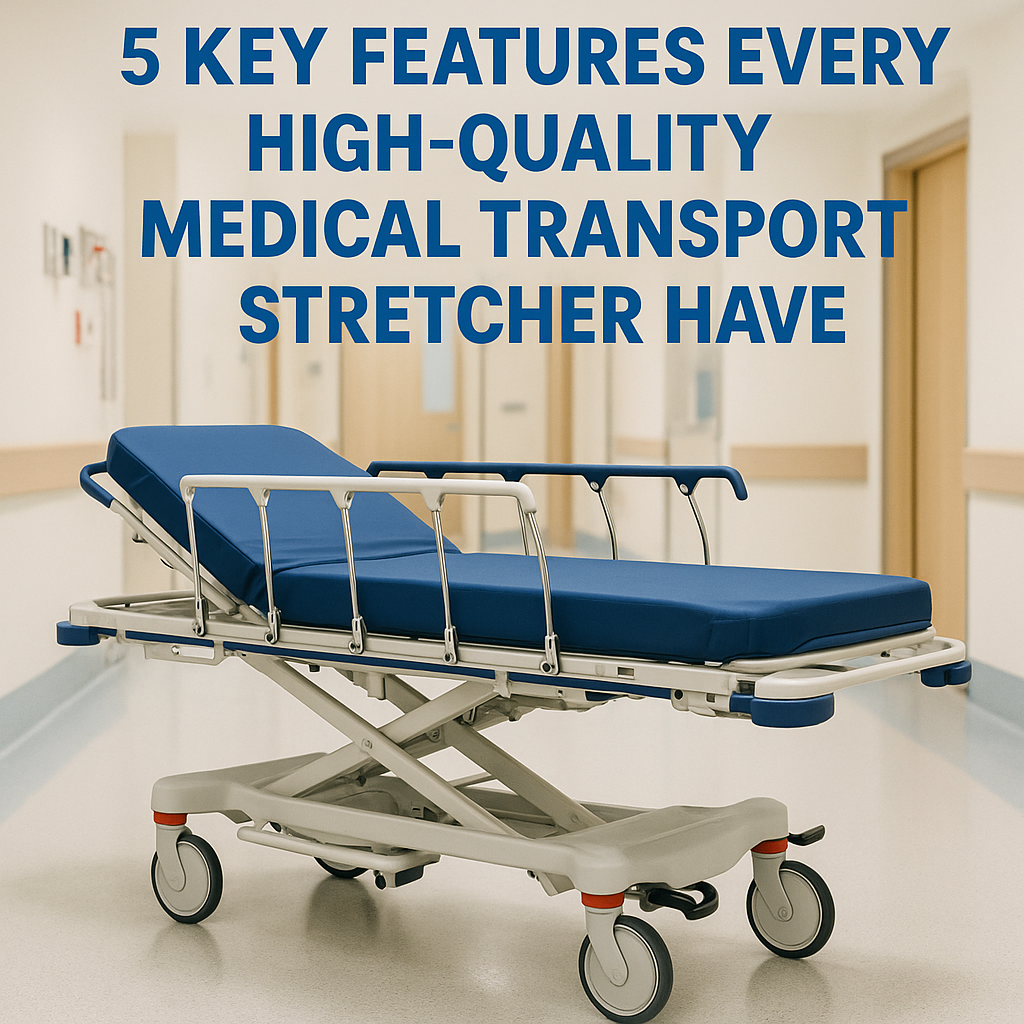5 Key Features Every High-Quality Medical Transport Stretcher Should Have

A good transport stretcher isn’t just about wheels and a frame, it’s the backbone of safe, efficient patient care. Whether you’re in a fast-paced ER, a surgical recovery unit, or a long-term care facility, the right stretcher supports both your patients and your staff in critical ways.
But with so many options out there, how do you know which stretcher is the best fit for your facility?
In this guide, we’ll walk through five features that truly make a difference when it comes to performance, durability, and safety. If you're planning to invest in a transport stretcher that can stand up to real-world clinical use, these are the things you can’t afford to overlook.
1. Durable Frame and High Weight Capacity
Let’s start with the basics. A medical stretcher has to be strong enough to safely support every patient that rolls through your doors, no exceptions. A high-quality transport stretcher should be built with a heavy-duty frame that can handle a wide weight range and last through years of constant use.
What to look for:
-
A steel or reinforced aluminum frame
-
Weight capacity of at least 500 lbs (go higher if your facility handles bariatric patients)
-
Powder-coated or corrosion-resistant finishes that can handle daily cleaning
Choosing a stretcher with a solid build isn’t just about long-term value. It’s about protecting your patients and giving your team the confidence to move quickly and safely in high-pressure moments.
2. Easy, Reliable Mobility
One of the main reasons you need a transport stretcher is of course - to move patients. But not all stretchers roll equally. Good mobility means smoother transfers, faster response times, and less physical strain on staff.
Key features to look for:
-
Large, medical-grade casters for easy movement across various floor surfaces
-
A central locking system so staff can engage or release brakes with one step
-
Directional control to help steer through tight spaces like hallways or elevators
-
Push handles that are ergonomic and easy to grip
When your team is wheeling a patient from surgery to recovery, or navigating a crowded emergency department, mobility features make all the difference.
3. Adjustable for Comfort and Care
Every patient is different, and a stretcher should offer enough flexibility to accommodate their needs. Whether you're elevating the head for easier breathing or lowering the bed for safer transfers, adjustability is key.
Look for stretchers with:
-
Adjustable head and foot sections that move smoothly
-
Height adjustment — especially electric or hydraulic options
-
Trendelenburg and reverse Trendelenburg positioning for specific procedures
-
Side rails that fold down easily but stay secure when locked
A well-designed transport stretcher adapts to the patient, not the other way around. And that flexibility helps everyone, from the patient to the nurse to the attending physician.
4. Built-In Safety Features
You can’t cut corners when it comes to safety. Whether you're moving a post-op patient or stabilizing someone after trauma, your stretcher needs to offer solid, built-in protection.
Essential safety features include:
-
Strong, lockable side rails that prevent falls
-
Safety straps or patient belts for secure transport
-
A quick-release backrest or CPR function in case of emergencies
-
Stable caster locks to keep the stretcher from rolling during care or transfer
Safety isn’t just about protecting the patient, it also protects your staff from avoidable accidents and injuries. A secure stretcher setup helps everyone focus on care instead of worrying about what could go wrong.
5. Easy to Clean and Maintain
Hospitals and clinics are held to strict standards for cleanliness, and your transport stretcher needs to support those efforts not get in the way. The easier a stretcher is to wipe down and disinfect between patients, the better.
What to prioritize:
-
Seamless, non-porous surfaces that won’t trap fluids or bacteria
-
Antimicrobial mattress covers that resist staining and tearing
-
Frames that don’t have a lot of grooves or hard-to-reach crevices
-
Materials that can stand up to strong disinfectants and daily cleaning
A well-designed stretcher keeps infection control simple, which helps your staff stay on top of protocols and your patients stay safer.
Bringing It All Together: Choosing a Stretcher That Delivers
A transport stretcher may seem like a simple piece of equipment, but when it’s in use, every detail matters. From the frame to the wheels to the mattress cover, these features directly impact patient care, staff efficiency, and clinical outcomes.
To recap, here’s what to prioritize in a high-quality stretcher:
-
Strong, reinforced construction with a high weight limit
-
Smooth, stable mobility features with locking control
-
Adjustable positioning for comfort and care flexibility
-
Safety systems that protect both patients and providers
-
Easy-clean materials that support infection control
Investing in the right transport stretcher means fewer risks, more efficient care, and better patient experiences. And when you choose one that’s built to last, you’ll see real ROI not just in saved time and effort, but in better outcomes across the board.
Looking for the Right Transport Stretcher?
At PediaPals, we offer durable, full-featured transport stretchers that are trusted by hospitals, outpatient centers, and urgent care clinics across the U.S. Our stretchers are designed with the features that matter most - strong frames, smooth mobility, patient safety, and easy cleaning all in a compact footprint that fits your facility.
Explore our transport stretcher collection here and get in touch if you have questions about specifications, compatibility, or bulk orders. Our team is here to help you find the right fit for your care environment.
